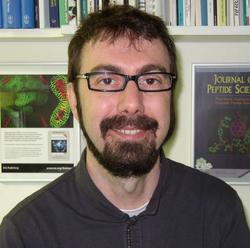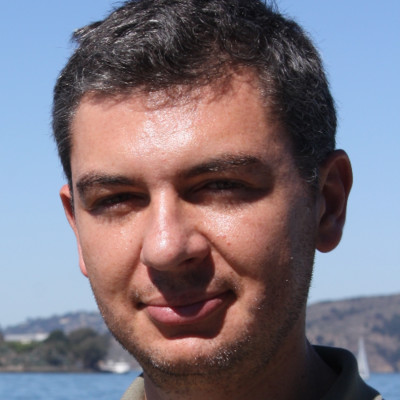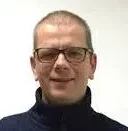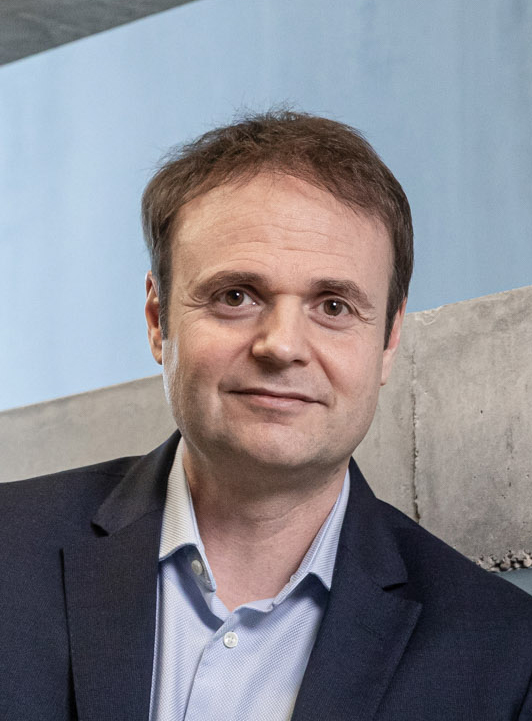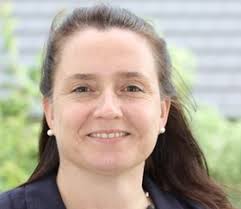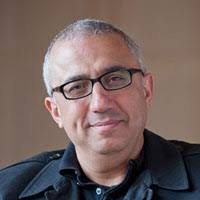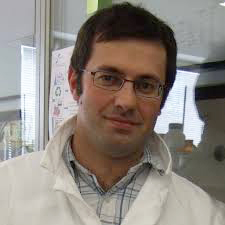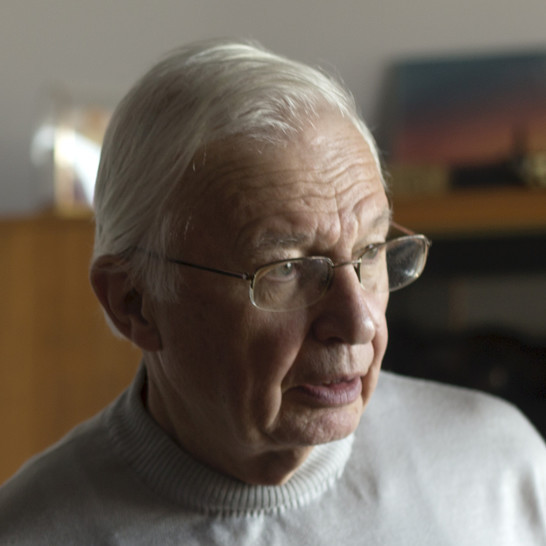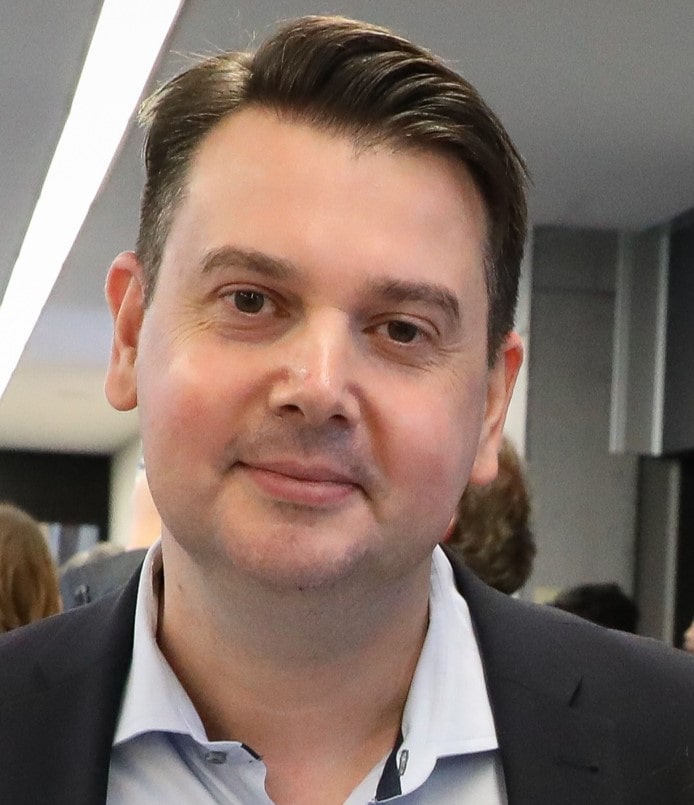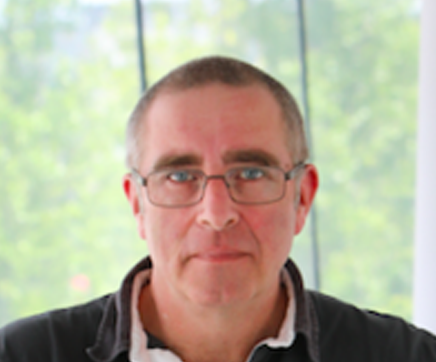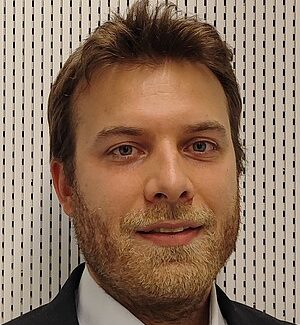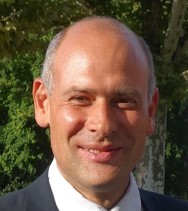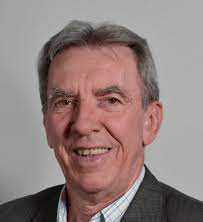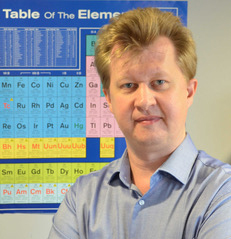The research teams
The 4 scientific pillars of SysChem
The research cluster is structured around four main research areas:
Pillar 1: Energy and functional materials
Pillar 2: Chemistry–biology interface and bioinspired systems
Pillar 3: Biocompatible materials and architectures
Pillar 4: Quantum chemistry and emerging phenomena
Discover the list of laboratories classified by research topic
Paolo Samori – Nanochemistry
Alberto Bianco – Therapeutic Multifunctional Carbon and 2D Nanomaterials
Giulio Ragazzon – Driven Chemical Processes
Amir Hoveyda – Catalytic Chemical Synthesis
Marco Cecchini – Molecular Function and Design
Vincent Robert – Quantum Chemistry
Burkhard Bechinger – Membrane Biophysics
and NMR
Alberto Bianco – Therapeutic Multifunctional Carbon and 2D Nanomaterials
Peter Faller – Biometals and chemical biology
Petra Hellwig – Bioelectrochemistry
and Spectroscopy
Andrey Klymchenko – Nanochemistry and Bioimaging
Vladimir Torbeev – BioSystems Chemistry
Nicolas Giuseppone – Self-Assembled Molecular Systems
Jean-Marie Lehn – Supramolecular Chemistry
Jean-Pierre Sauvage – Organo-Mineral Chemistry
Jean-François Lutz – Precision Macromolecular Chemistry
Jean-François Nierengarten – Chemistry of Molecular Materials
Membrane Biophysics and NMR
Therapeutic Multifunctional Carbon and 2D Nanomaterials.
Molecular Function and Design
Biometals and chemical biology
The group works at the interface of chemistry with biology and medicine. The aims are on the one hand to understand chemical processes in biology and medicine by obtaining mechanistic molecular insights, and on the other hand to synthesize new compounds as chemical tools for biology and/or for potential therapeutic applications. The expertise of the group lies mainly in the chemistry of metal ions, metal-ligand complexes and metal-peptides, in the synthesis of peptides, self-assembly of peptides like amyloids, and bioconjugation.
Application are diverse and include: elaboration of sensors (fluorescence, luminescence, MRI contrast agent, NMR, ..), anticancer and antimicrobial compounds, potential therapeutic compound for neurodegenerative diseases, such as Alzheimer’s or Parkinson disease, biocatalysis by biomaterials.
Self-Assembled Molecular Systems
The team led by Nicolas Giuseppone is working on supramolecular chemistry and molecular machines.
The complexity and performance that characterize living systems result from a structure combining several levels of hierarchical organization in space and time. One of the major challenges facing supramolecular chemistry today, particularly at its interfaces with physics and biology, is to design molecules capable of spontaneous organization, leading to (bio)materials with new functional properties at different scales. This “bottom-up” approach to nanoscience is now possible thanks to the exploitation of programmed self-organization phenomena at the molecular scale.
Nicolas Giuseppone’s team is interested in the understanding and generation of self-assemblies and controlled molecular movements, their dynamics and cooperativity. The objective is to generate complex systems capable of interacting with and adapting to their environment through emergent processes. From an application point of view, such properties will be necessary for the next generation of smart materials.
Bioelectrochemistry and Spectroscopy
The laboratory specialises in the study of enzymes: the extremely effective catalysts present in nature that perform the chemical reactions necessary for cellular life. The catalytic power of enzymes is responsible for the production of substances and energy, which are indispensable for the proper functioning of living organisms.
More specifically, the team uses Raman and infrared (IR) difference spectroscopy, associated with electrochemistry, to study the catalytic function of proteins and to elucidate their mechanisms.
The team’s scientific expertise is based on the use of nanomaterials to engineer direct electrochemical manipulation of membrane proteins. It also develops approaches relating to the thermostability of proteins and the identification of spectroscopic markers of conditions such as Alzheimer’s disease in biological tissues.
Catalytic Chemical Synthesis
Amir Hoveyda was one of the 12 researchers selected in the third-wave call for proposals for the “Make our planet great again” (MOPGA) initiative launched by French President Emmanuel Macron. The research undertaken within the group focuses on stereochemically defined organic molecules, either small molecules or macromolecules, that play or could play a crucial role in drug development and progress in human medicine. In particular, the laboratory works on new methods of catalysis, devoted to the production of high-added-value organic molecules for medicine, such as compounds active against cancers, tumours or hepatitis C.
The objective is to introduce catalytic methods to generate these molecules that are effective, selective, widely applicable and practical (scalable), as well as being sustainable and profitable (for example, no precious metals). The team’s main objective is to develop catalysers, strategies and methods that respond practically and realistically to our major environmental challenges.
Based on the same principles, Amir Hoveyda co-founded XiMo, a European company, alongside Richard Schrock, winner of the Nobel Prize for Chemistry in 2005.
Nanochemistry and Bioimaging
The laboratory’s research revolves around the development of new functional molecules and nanoparticles, known as fluorescent probes, for biological and biomedical applications. Thanks to these fluorescent molecular probes, it is possible to achieve imaging of the structure and function of living cells on a molecular level, thanks to new concepts based on different photochemical phenomena. The goal is to exploit these concepts for biodetection and bioimaging, in particular through probes for biomembranes, intracellular organelles, membrane proteins and nucleic acids. Six membrane probes have already been brought to market (by ThermoFisher Scientific and Cytoskeloton).
The team also develops ultrabright self-assembled fluorescent organic nanoparticles, based on polymers or lipids loaded with fluorescent dyes, for biodetection and bioimaging. In particular, based on an innovative design of polymers and ionic dyes with bulky counterions, the laboratory develops nanoparticles of small, controlled size, offering bright fluorescence and efficient energy transfer. These nanoparticles are used as scaffolds for the synthesis of ultrabright nanoprobes for the detection of nucleic acids and proteins in cells and biological liquids. These nanoprobes are relevant both to fundamental research on bioimaging of rare targets and for the ultrasensitive detection of bimolecular markers in diagnostics.
Recently, the team developed new fluorescent materials functioning in the visible and near-infrared regions, which have found applications in image-guided surgery in collaboration with surgeons from the IRCAD research institute.
Supramolecular Chemistry
The winner of the Nobel Prize for Chemistry in 1987, Jean-Marie Lehn is the founder of supramolecular chemistry. He began his career initially focussing on molecular recognition, and in particular its major role in biological processes. From there, his research broadened out to incorporate catalysis and supramolecular transport processes. It also extended to the design of molecular components as the bases for molecular electronics and photonics.
Another area of development relates to the design of “programmed” systems capable of self-organisation through the spontaneous assemblage of appropriate components into well-defined supramolecular architectures.
The author of over 1,000 publications, he belongs to multiple academies and institutions as well as the boards of private companies.
Precision Macromolecular Chemistry
The team studies the synthesis of so-called “precision” non-natural polymers: very high added value materials with complex arrangements of monomers in their chains. The team focuses on new approaches that must be simple, low-cost and easy to implement.
The team was the first in the world to synthesise “coded” polymers with perfectly controlled sequences of monomers. Like natural macromolecules (proteins, DNA), the laboratory can prepare structures that are perfectly defined at the molecular level. These new materials unlock new applications for polymer materials, for example in anti-counterfeiting.
In addition, with their perfectly controlled structures, these new-generation materials also open the door to polymer data storage. The researchers have been able to write binary code identical to the code used in computing language into polymers: a chemical alternative for information storage in materials that are becoming ever more compact and durable.
Other applications are studied in the laboratory, such as drug delivery via bio-hybrid structures combining synthetic segments with natural macromolecules (DNA aptamers), or the recycling of plastic materials.
Chemistry of Molecular Materials
The team is recognised for its contributions in the field of fullerene chemistry, transition metals chemistry and supramolecular chemistry. The research is strongly focused on synthesis and relates to a wide variety of research subjects ranging from the development of molecular materials and bioactive compounds to the construction of supramolecular assemblages with novel electronic properties.
More recently, the team launched a new research program relating to the chemistry of pillar[5]arenes, unique macrocyclic compounds with therapeutic applications that have yet to be explored.
Driven Chemical Processes
The research of this group is inspired by how energy conversion happens in biology. Learning from nature, this group studies fully artificial molecules capable of absorbing energy from a source. In other words, unconventional strategies for energy conversion.
Examples of energy sources are light, electricity, and chemical energy. We might be less used to considering chemical energy among the three mentioned, but that’s what powers our biology, and chemists are learning only now to engineer mechanisms that harvest chemical energy to perform useful tasks. By learning how to absorb energy, we can realize processes that are impossible without an energy source, such as assembling high-energy structures, transporting molecules in specific compartments, and even cooling the surroundings – in the same way a fridge requires electricity to work.
The core expertise of this laboratory is experimental measurements using techniques that unravel molecular properties, mostly in solution. Yet, the laboratory spans from synthetic organic chemistry to theoretical investigations, with an outlook on material science and biochemical processes. A concrete long-term motivation for this research is to tackle mitochondrial diseases, which affect the organelles that generate energy for the cell. These diseases remain without a cure, possibly because we have not yet unraveled energy conversion phenomena at the molecular level.
Quantum Chemistry
Nanochemistry
The laboratory’s research activity revolves around the relationship between architecture and function in organic or graphene-derived multifunctional nano-structured materials. This research work is based on a combination of approaches involving supramolecular chemistry, hierarchical self-assembly, the nanochemistry/nanophysics of surfaces and interfaces, the development of functional materials and the study of their fundamental physicochemical properties, as well as the production of optoelectronic (nano)devices based on hybrid supramolecular architectures.
The team is interested in the chemistry of bidimensional (2D) materials, smart supramolecular systems and high-performance multifunctional materials and (nano)devices in order to develop an “internet of functions” for energy, detection and optoelectronic applications. This includes: Engineering of 2D materials (graphene and other layered compounds): production, regulation of their properties, production of devices for optoelectronics and detection;
Multi-scale adaptation of smart supramolecular systems: development of multi-reactive hybrid materials; High-performance multifunctional materials and (nano)devices for optoelectronics, detection, data storage, energy storage, etc.
Organo-Mineral Chemistry
Jean-Pierre Sauvage was awarded the Nobel Prize for Chemistry in 2016. This distinction rewarded his pioneering work on the design and synthesis of molecular machines. These nanometric-scale assemblages are capable of controlled motion in response to various signals, such as UV light, for example.
Nature abounds with complex protein machines that chemists are trying to decipher. Like a muscle that contracts, they play a part in numerous biological processes. Inspired by these processes, Jean-Pierre Sauvage devoted his career to synthesising molecules that behave like machines. The challenge lies in being able to trigger and control their movement using signals (physical, chemical, electrical, etc.) that alter the balance of forces between their atoms. Oscillating rotary systems, molecular “shuttles” and artificial muscles on a nanometric scale are some of the synthetic dynamic systems he has developed.
These nanomachines are destined for a bright future. Numerous applications are currently being studied: targeted transport of pharmaceuticals, design of deformable materials, information storage in “molecular” computers, light-controlled molecular switches…
BioSystems Chemistry
This research group specialises in the chemistry, biology and characterisation of proteins using biophysical tools, in order to study biological problems, particularly relating to neurodegenerative diseases. Research topics include the molecular foundations of protein misfolding, methodologies for high-throughput combinational protein synthesis, new chemistry-based approaches to study and target intrinsically disordered proteins and protein design. The team is developing new tools that will enable the robust chemical synthesis of protein libraries comprising 100-10,000 compounds.

